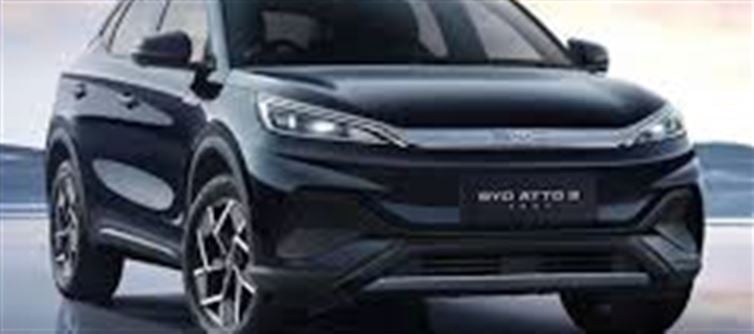
In a stunning turn of events, BYD, the Chinese automaker, has outpaced Tesla in global electric vehicle (EV) sales, marking a significant shift in the EV market hierarchy. Through the first nine months of 2025, BYD has emerged as the global leader in EV sales, surpassing tesla by a significant margin.
Here's a breakdown of how this happened and what it means for the future of the electric vehicle industry:
1. BYD's Dominance in Global EV Sales
In a major milestone for the Chinese automaker, BYD has sold more electric vehicles globally than any other company, including Tesla. The company's impressive performance can be attributed to several factors:
· Expanded Global Presence: BYD has steadily increased its presence not just in china, but also across Europe, Asia, and other international markets. Its wide range of affordable EV models has helped attract a larger customer base.
· Diverse Model Portfolio: From affordable sedans to SUVs and electric buses, BYD has a broad EV lineup that appeals to a wide variety of customers. This diversity allows the company to target both mass-market buyers and premium customers.
· Strong Performance in China: As the largest EV market in the world, china has been instrumental in BYD’s rise to the top. The company’s success in its home market, with models like the BYD Tang and BYD Qin, has played a major role in its global dominance.
2. Tesla’s Continued Growth but Slower Pace
Tesla, long considered the leader in the EV sector, has seen steady growth, but its pace has slowed compared to BYD. While tesla has managed to maintain dominance in certain premium EV segments, especially with the Model 3 and Model Y, it has faced challenges:
· Stiff Competition: tesla now faces significant competition from BYD and other automakers, which are releasing highly competitive EV models with similar or better features at more attractive price points.
· Production and Supply Chain Constraints: Tesla's growth has been constrained by production bottlenecks, including challenges in scaling up production in certain regions and supply chain issues.
· Price Wars: While tesla has responded with price cuts, these adjustments have affected its profitability, and the company has faced pressure from other brands offering competitive pricing.
3. Key Factors Driving BYD's Success
· Affordable Pricing: One of BYD’s key strategies has been to keep the prices of its EVs competitive. By producing electric vehicles that are both high in quality and affordable, BYD has tapped into a larger market segment, especially in emerging markets where affordability is crucial.
· Battery technology Leadership: BYD is a leader in battery manufacturing, with its Blade Battery technology providing enhanced safety and longevity compared to traditional lithium-ion batteries. This has made BYD’s EVs more reliable and cost-effective in the long run.
· Government Support: Chinese government incentives for EV manufacturers and consumers have been a huge advantage for BYD. Additionally, BYD’s ties to the Chinese government have given it an edge in terms of subsidies, tax breaks, and access to funding.
4. The Future of the EV Market: What This Means for tesla and BYD
· Tesla’s Response: tesla is unlikely to back down easily. The company has innovative plans in the pipeline, including the launch of new vehicles like the Cybertruck and improvements to the Model S and Model X. The success of Tesla's full self-driving technology and expansion into new markets could help it regain the top spot.
· BYD’s Expansion: BYD is set to continue its aggressive expansion, particularly in markets like Europe and the US, where the demand for electric vehicles is growing rapidly. With the backing of Chinese manufacturing and continued innovation in battery technology, BYD is well-positioned to dominate the EV market for the foreseeable future.
5. Implications for the Global EV Market
· Price Reductions and Affordability: The rise of BYD has helped push down prices in the EV market, with several automakers following suit to compete with BYD’s cost-effective models. This could drive even more consumers to make the switch to electric vehicles in the coming years.
· Increased Competition: As tesla faces more competition from brands like BYD, Volkswagen, and General Motors, the EV industry is poised for rapid innovation. This could lead to better vehicles, more options, and reduced costs for consumers.
· Shift in Market Power: BYD's rise shows the growing influence of Chinese automakers in the global automotive landscape. China’s massive production capabilities, strong government support, and rapidly growing consumer market position it as a leader in the future of electric mobility.
Conclusion: The Changing EV Landscape
BYD’s dominance in 2025 is a game-changer for the global electric vehicle market. With the company surpassing tesla in sales, it signals a shift in the industry’s power dynamics, one where Chinese manufacturers are gaining ground on their Western counterparts. While tesla remains a formidable player in the EV market, it will need to adapt quickly to keep up with the fast-evolving competition from BYD and other automakers.
As the EV market continues to grow, consumers can expect more choices, better technology, and lower prices, making electric mobility more accessible than ever. The battle for the top spot in the EV market is far from over, but BYD’s impressive performance has certainly shaken things up in 2025.
Disclaimer:
The views and opinions expressed in this article are those of the author and do not necessarily reflect the official policy or position of any agency, organization, employer, or company. All information provided is for general informational purposes only. While every effort has been made to ensure accuracy, we make no representations or warranties of any kind, express or implied, about the completeness, reliability, or suitability of the information contained herein. Readers are advised to verify facts and seek professional advice where necessary. Any reliance placed on such information is strictly at the reader’s own risk.
.jpg)




 click and follow Indiaherald WhatsApp channel
click and follow Indiaherald WhatsApp channel